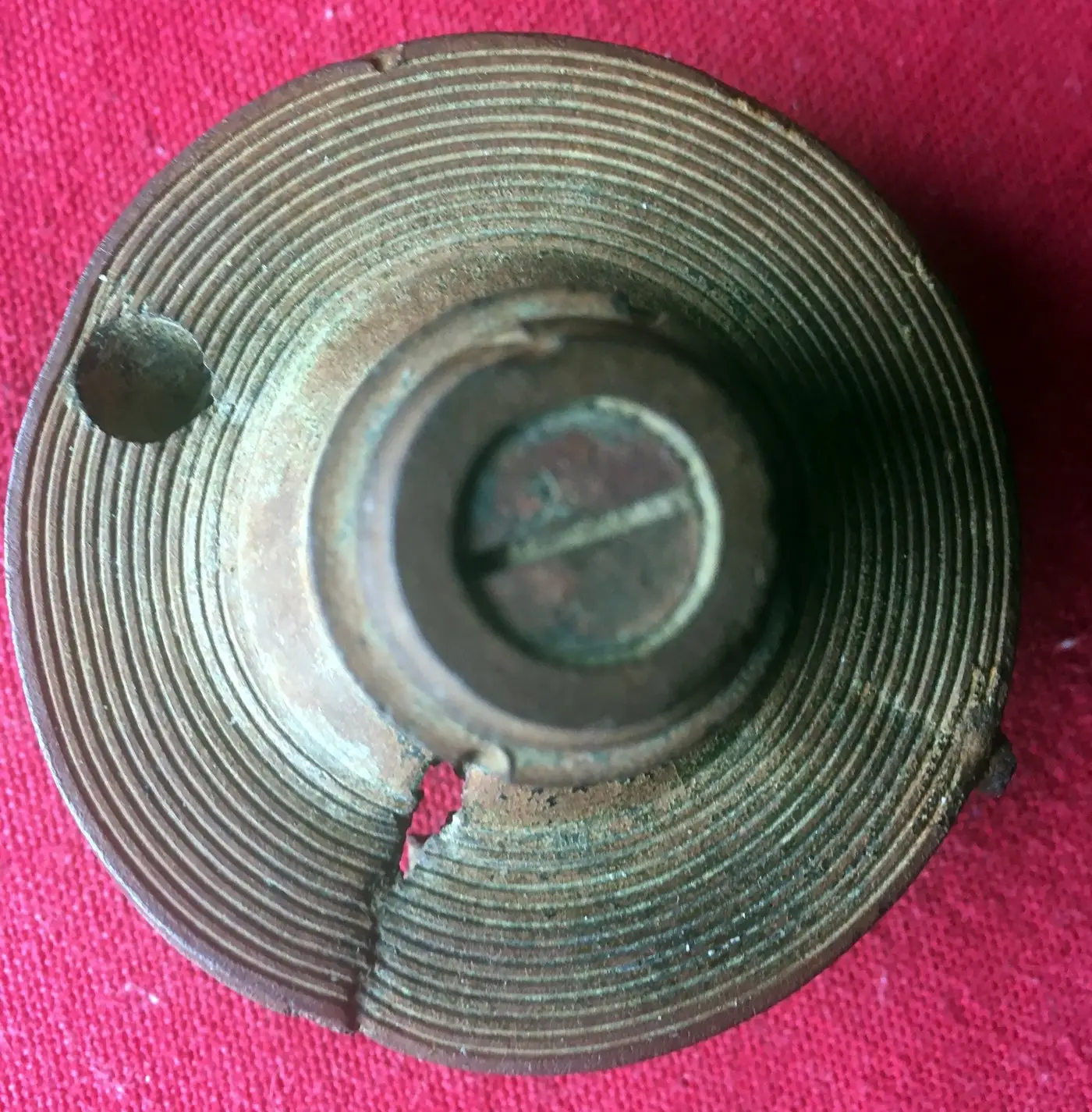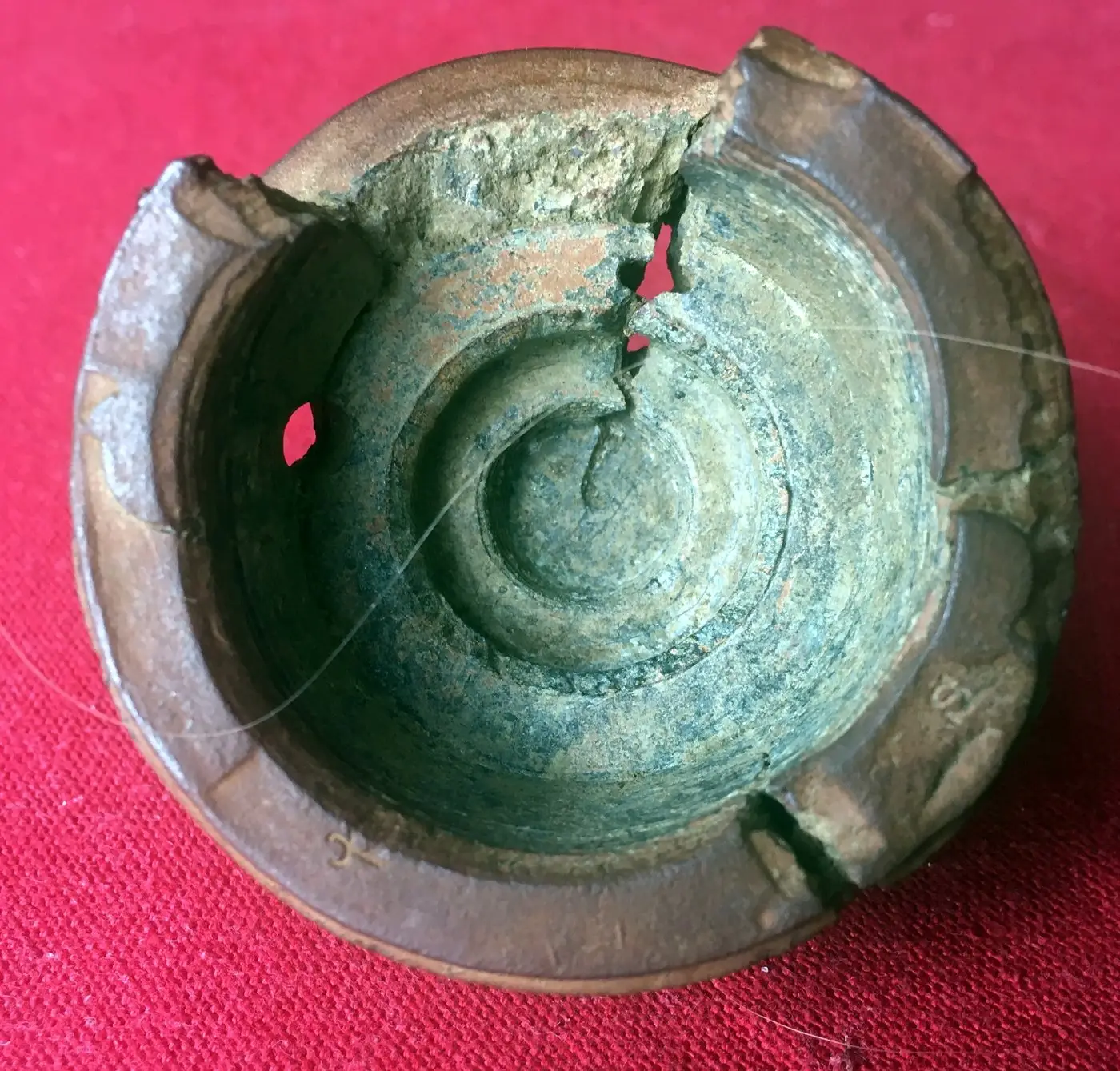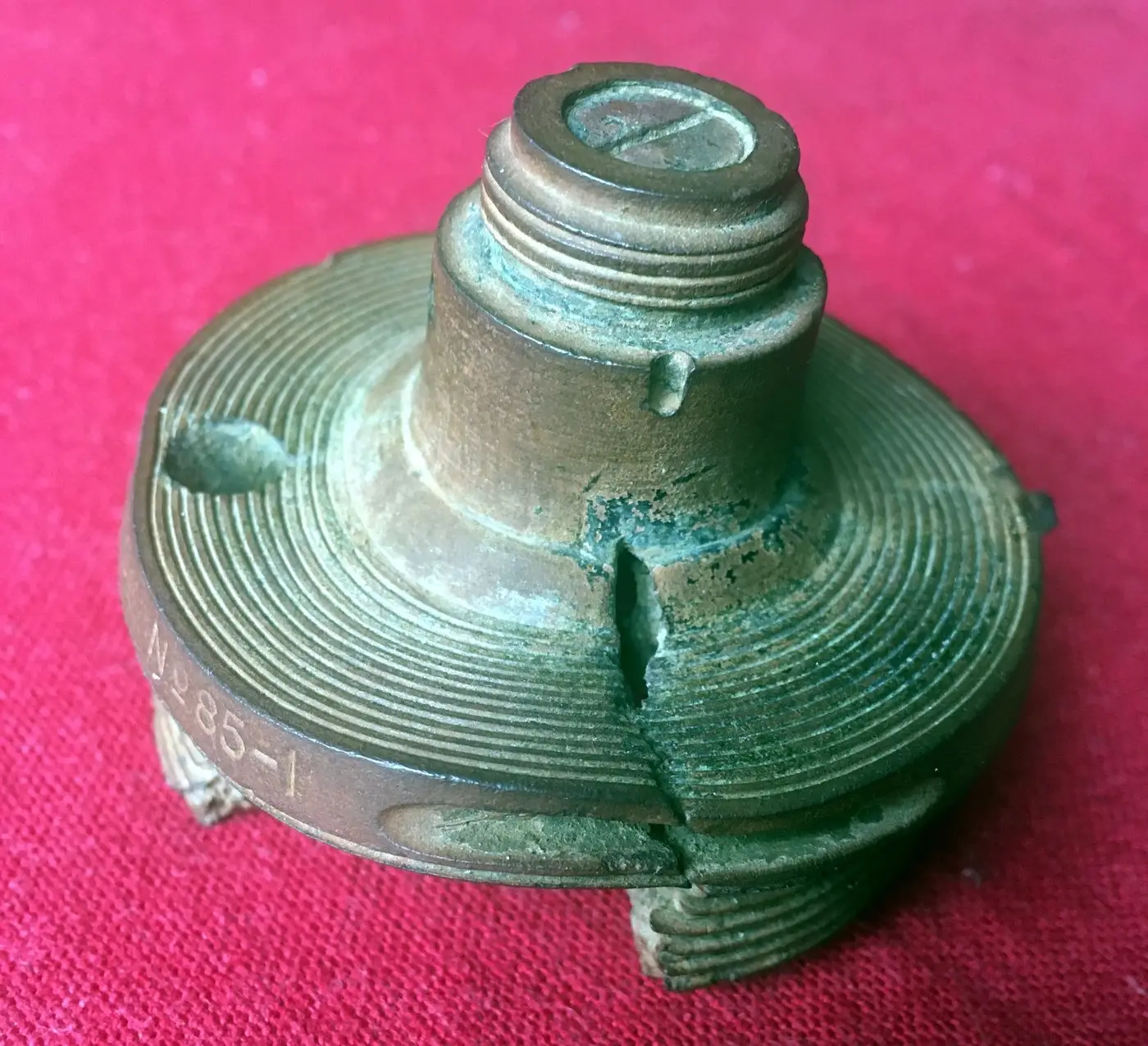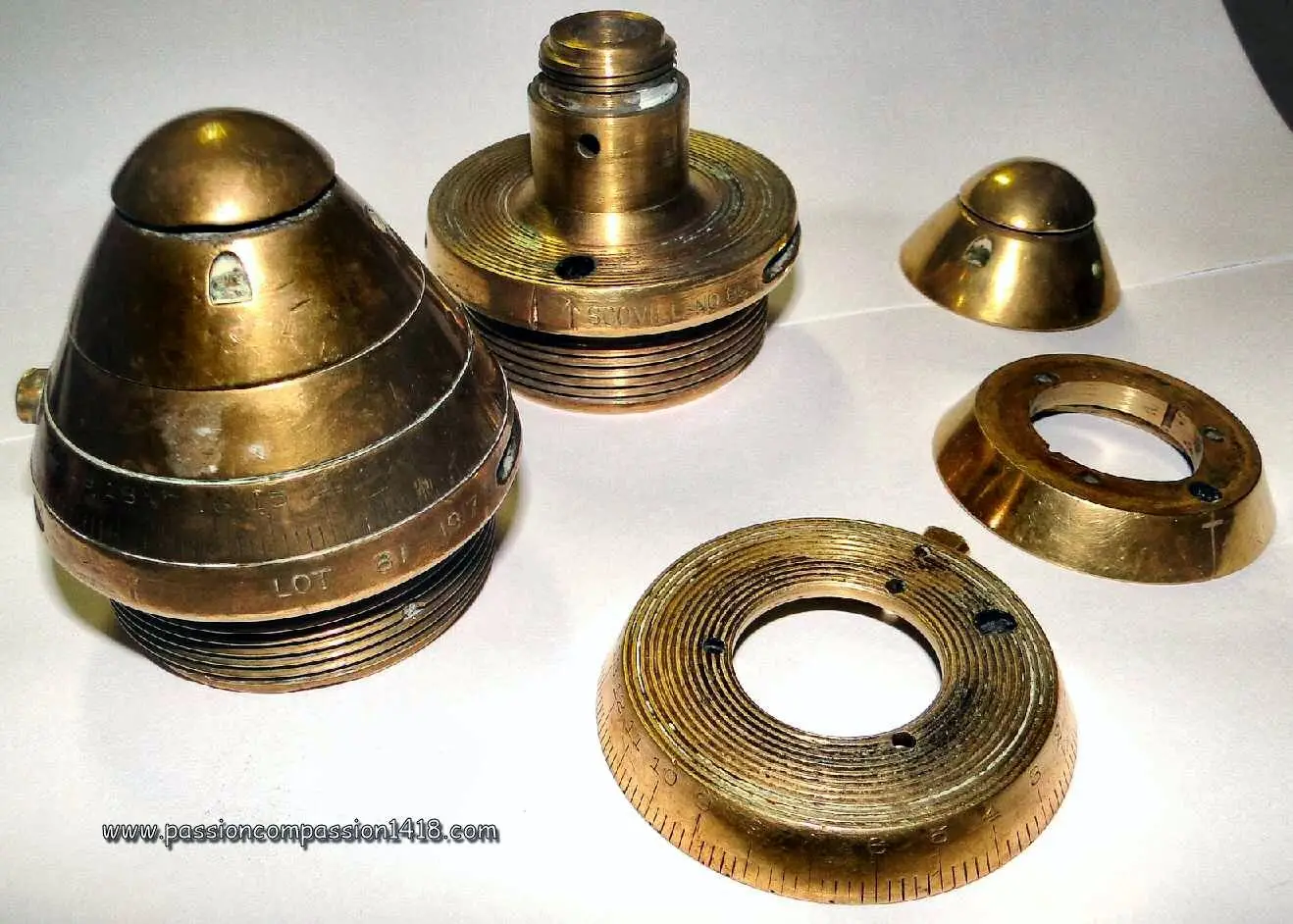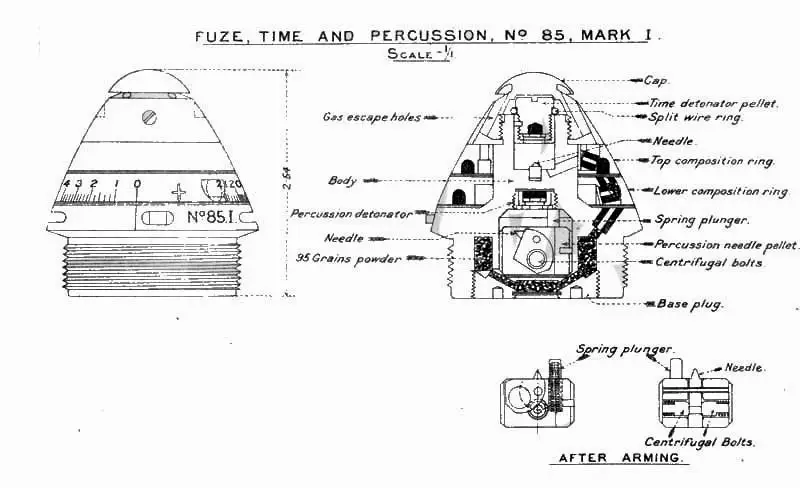WWI Shell Fuse
The fuse component of a WW1 artillery shell was rooted up in 2022 by a pig in its sty in the field immediately adjacent to Goodmans Barn, Tumblefield Road. It was donated to the Society by the caretaker/occupant, Bart Holden. Why part of a WW1 shell should be found so close to a dwelling in Stansted is a mystery.
These fuses were originally exported to the UK before America entered World War One in 1917 and were manufactured by the AF Company USA. The fuse component is date-stamped 1917 and marked ‘Lot 4’. It appears to be bronze, with other examples being made of brass as per the illustration showing the entire nosecone in assembled and disassembled form.
There were two versions: a time fuse, which had a designation No 85/44 and a blue T marker had a rotating ring as can be seen in the exploded view, and was used in conjunction with speed and distance calculations to air burst in the vicinity of aircraft or over advancing troops. It would be tempting to think that this fuse may have been used in this capacity at the outbreak of WW2 as an anti-aircraft shell but there is no /44 designation visible. British Anti-Aircraft Guns at that stage of WW2 were designed to use 3.7” ammunition, whilst this fuse was designed for either 3” or 3.3” ammunition.
From its condition, the fuse would appear to have achieved its purpose, the inflicted damage being somewhat greater than might be expected by merely falling to earth, but this is conjecture.
In conclusion, one must assume it was in all probability a WW1 souvenir, subsequently buried in a rubbish pit, although one interesting possibility does spring to mind which is contained in Sheila Parker’s WW2 Memoirs. In these, Sheila recalls a Home Guard field gun demonstration in the Recreation Ground, with the gun limber drawn up against the school hedge and the gun pointing along the Malthouse Road valley. It is not beyond the realms of possibility the Home Guard could have been issued with WW1 weaponry in the early stages of World War Two. Could this gun have been used for practice elsewhere in the village one wonders?
The 85 fuse contains a number of overlapping rings burning in sequence. The relationship of each ring to the other determines how long the burning train of powder is. The black powder used in the fuse time trains was a specially selected grade, all black powder is a ‘selected’ grade but in this fuse, a particularly fine and stable type was used.
From the fuse, a hollow tube runs inside the shell to a base plate below the shrapnel balls – around 350 lead balls packed in resin in an 18-pounder. Below this plate is a small charge of black powder. The resin holds the balls stable to avoid an effect on flight and burns to give the puff of black smoke for observation. When the timed fuse triggers above the target a small flash is sent from the fuse down the tube igniting the black powder – this ‘explosion’ is a relatively small charge designed just to expel the balls – it is not an explosion in the sense of a HE shell. The shell casing itself is actually quite thin as it does not need to ‘resist’ the detonation as in a HE shell. The fuse is fitted to the shell with shallow threads so that it is separated from the shell casing easily.
This detonation pushes the base outwards ejecting the balls and the fuse head in a wide area over the ground – the shell can be regarded as a huge shotgun cartridge. The combined velocity of the forward motion of the shell and ejected balls produces an obvious lethal effect.
The shell casings are not designed to fracture. All the component parts; balls, casing, fuse, flash tube and plate are probably the most easily found amongst numerous objects on historical battlefields.
Author: Mike Goddings
Editor: Tony Piper
Acknowledgements: www.passioncompassion1418.com
Last Updated: 11 April 2023

